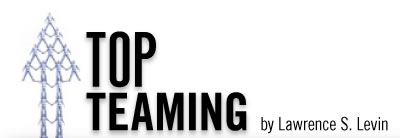Top Teaming: Has the Nature of Change Somehow Changed (Part 2)
In a previous blog, we suggested that given the increasing complexity, uncertainty and rate of change in the world that the very nature of change itself has, in fact, changed.
Rarely do we find anymore that change occurs and we then return to a previous state of equilibrium. That is almost old thinking. We then began to view change as more of a whitewater experience in which waves of change are punctuated by short returns to normalcy. Our adaptability and physiological wiring could handle that. But that’s no longer fully true. Now it seems as if we live in a personal, business and global world in which change is constant.
And most things, from personal technology to geo-politics seem fair game. Predictability and control, two of the major variables in controlling stress are on the endangered species list. And minimized are the classic 5 and 7 step models of how to deal with change.
So what do we best deal with this?
From a leader-led change perspective, our responsibilities begin with providing honest and repeatable communication about:
- What is changing/what is not
- The “why” and context behind the change
- That this isn’t the first and will not be the last change
- Acknowledging the disruption and impact
- Maximizing predictability and control
- Defining and re-defining “What we are FOR”
- Providing clear expectations of the workforce during and after this change
Sufficient? No – but it’s a start. Your credibility is on the line
And as those impacted by changes we must:
- Understand the meaning and impact of the changes — what has really changed?
- Redraw the maps — who are our teams, who are our critical stakeholders? What are the conversations we must have? (Move fast on this)
- Dialogue about what kind of team do we need to be? (It has changed)
- Move toward one another and be aware of our interdependencies. (Getting more siloed is natural, but not good)
- Define and communicate what we need from management
- Take care of us and those around us (Essential)
- Be extraordinarily pro-active about the new and the next (High predictability and control strategy)
This is the high level approach. In the next blog, we’ll look at adaptive strategies and best practices to re-form structures and working relationships that have been impacted by changes. As we say, you have to “wrap your head around change.”
Stay tuned and weigh in.
